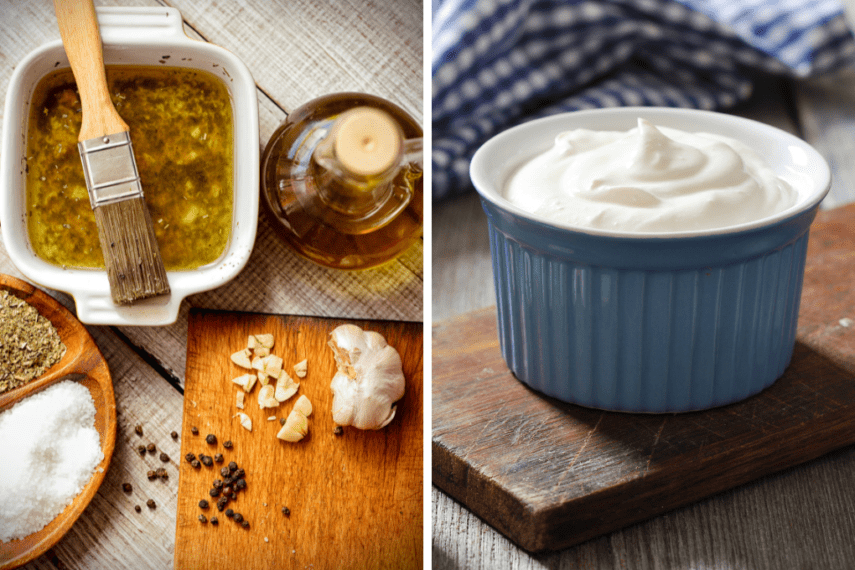
With four kids born within five years, my family was gulping milk by the gallons each week. As a pediatric dietitian, I knew that milk and dairy foods would provide key nutrients to fuel the growth and development of my children. And I’m not alone.
The American Academy of Pediatrics (AAP) and the American Heart Association (AHA), and other leading organizations recommend cow’s milk as one of the go-to nutrient-rich beverages for children between the ages of one and five years. 1, 2 From calcium and vitamin D for bone development, to protein, zinc and iodine for a child’s developing brain, there are many reasons why dairy foods help children grow and develop.
Nutrient-rich energy for the body
A calorie that delivers nutrients is a positive thing for any child. When children are young, their tummies are small, limiting the amounts of food they can eat in one meal or snack. Every bite is critical to getting key nutrients for growth and development.
But not all calories are equal. Some calories are “empty,” falling short on meaningful nutrients for health, growth, and development. Not so with dairy products! The calories, or energy, provided by dairy foods like cheese, milk and yogurt, are packaged alongside many nutrients, including protein, vitamins A and D, calcium, iodine, zinc, and vitamin B 12.
A high quality source of protein
Protein is especially important during childhood. It provides amino acids which are used to support the growth of tissues, organs, and the bones, brain, and body. It’s believed that milk protein stimulates growth and provides other easily absorbed and utilized nutrients that help this process. Milk consumption has been shown to help children in under-developed countries grow better, especially if their growth has faltered. ³ Furthermore, a 2019 systematic review in Advances in Nutrition found that adding milk to the diet significantly improved bone mineral density in children. ⁴
Protein from dairy foods also helps repair damage to muscles. That’s why athletes love to drink milk after an intensive bout of exercise!
Dairy foods are filling
The presence of protein and fat (in whole, 2%, and low-fat versions of milk and other dairy foods) offers what I call the “filling factor.” Studies show that the presence of protein elicits a sense of fullness, or satiety, after eating. ⁵ One, this is due to the thermic effect of food (TEF), or the increase in energy burn when protein is consumed. ⁶ Two, protein takes longer to digest, causing a sense of fullness. Fat, when combined with protein, also promotes satiety. Why is feeling full after eating important? When kids are satisfied after a meal or snack, they are less likely to graze or overeat. Dairy is a natural source of protein and you can choose the amount of fat in dairy products, from full-fat to non-fat.
Builds good eating habits
Good eating habits encompass many things, like sitting at a table to eat or eating a variety of foods. When dairy foods are included in meals and snacks, not only do they add nutrients, but they provide a vehicle for exploring new foods. If you have a child who won’t eat broccoli, for instance, adding shredded cheese or blending it into a cream-based soup may entice them to try. A dollop of sour cream or a sprinkle of cheese on black bean dip just may sway your child to dig in. Dairy foods can be used to help little ones try new foods, flavors, and textures. If you want to build good eating habits in children, dairy foods can help you do it.
Enhances nutrition at snack time
Milk and other dairy foods make snack time even more nutritious. Pair dairy foods like cheese with crackers or raw vegetables; make a dip for fruit using plain yogurt mixed with mashed banana or defrosted frozen berries; top crackers with cottage cheese; or skewer cheese cubes and fruit. Take snack time to a new, nutritious level and incorporate nutrient-rich dairy foods.
Pleasing to picky eaters
Dairy foods are often well liked by picky eaters, which is a great relief to parents. I leaned on dairy foods myself, especially with my oldest child, who was quite fussy about food as a toddler. Milk, yogurt, and cheese afforded a safety net of good nutrition and encouraged exploration of new flavors and textures. I served milk with meals and offered tasty snacks including fruit smoothies made with yogurt, Ranch yogurt dip for carrot sticks and crackers, and peanut butter yogurt dip for apple slices.
There’s no magic food that guarantees your child will grow and develop perfectly, but providing a variety of foods, including dairy, helps all children get there, in more ways than one. As I reflect on feeding my now-adult children, I know dairy foods played a role in their overall growth, good health, and enjoyment of food.
Jill Castle is the author of Kids Thrive at Every Size (Workman 2024) and one of the nation’s premier childhood nutrition experts. She is the founder and CEO of The Nourished Child®, a nutrition education website and podcast for parents, and the author of books including Eat Like a Champion, Try New Food, The Smart Mom’s Guide to Starting Solids, The Smart Mom’s Guide to Healthy Snacking, and co-author of Fearless Feeding.
REFERENCES:
1. Lott M, Callahan E, Welker Duffy E, Story M, Daniels S. Healthy Beverage Consumption in Early Childhood: Recommendations from Key National Health and Nutrition Organizations. Consensus Statement. Durham, NC: Healthy Eating Research, 2019. Available at http://healthyeatingresearch.org.
2. What should your baby or child be drinking? Health groups now agree. (n.d.). Www.Heart.Org. Retrieved January 8, 2024, from https://www.heart.org/en/news/2019/09/18/what-should-your-baby-or-child-be-drinking-health-groups-now-agree
3. Herber, C., Bogler, L., Subramanian, S. V., & Vollmer, S. (2020). Association between milk consumption and child growth for children aged 6–59 months. Scientific Reports, 10(1), Article 1. https://doi.org/10.1038/s41598-020-63647-8
4. de Lamas, C., de Castro, M. J., Gil-Campos, M., Gil, Á., Couce, M. L., & Leis, R. (2019). Effects of Dairy Product Consumption on Height and Bone Mineral Content in Children: A Systematic Review of Controlled Trials. Advances in Nutrition, 10, S88–S96. https://doi.org/10.1093/advances/nmy096
5. Chambers, L., McCrickerd, K., & Yeomans, M. R. (2015). Optimising foods for satiety. Trends in Food Science & Technology, 41(2), 149–160. https://doi.org/10.1016/j.tifs.2014.10.007
6. Westerterp, K. R. (2004). Diet induced thermogenesis. Nutrition & Metabolism, 1(1), 5. https://doi.org/10.1186/1743-7075-1-5



